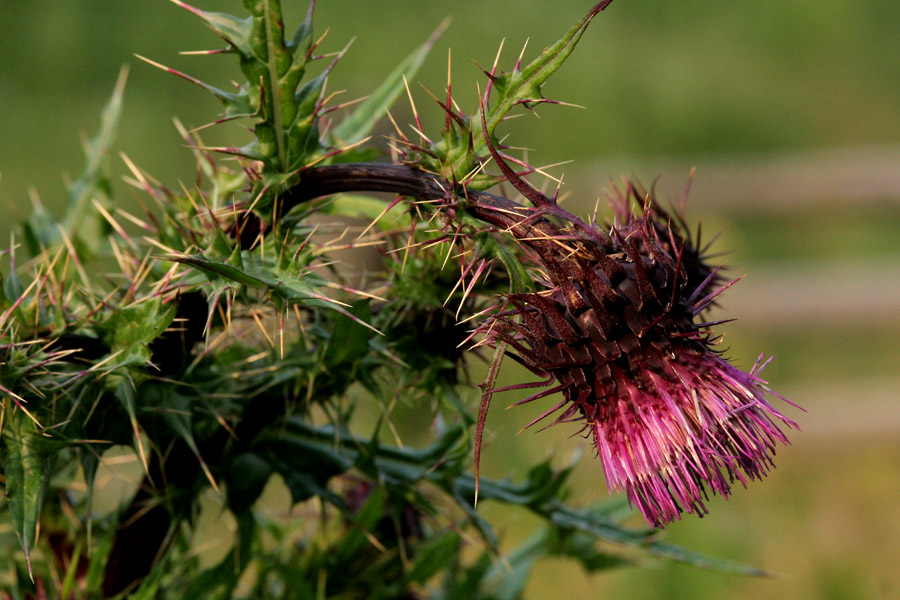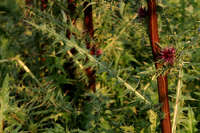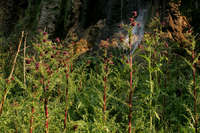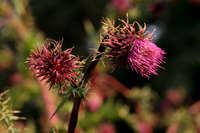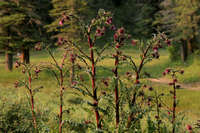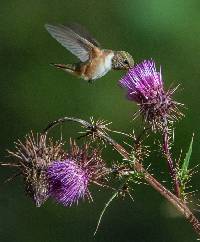Cirsium vinaceum
|
|
|
|
Family: Asteraceae
Sacramento Mountain Thistle, more...Sacramento Mountains thistle
|
Perennials, 100-200 cm; creeping roots. Stems 1, erect, (dark maroon), glabrous; branches several to many, stiffly ascending, distally nodding. Leaves: blades elliptic, 10-50 × 5-20 cm, 1-2 times pinnately lobed or divided, lobes lanceolate to ovate, main spines slender to stout, 3-10 mm, faces glossy green, glabrous; basal present at flowering, petiolate or winged-petiolate, divided nearly to midveins; proximal cauline winged-petiolate; mid and distal sessile, progressively reduced, less deeply lobed, bases auriculate-clasping; distalmost linear or lanceolate, bractlike, very spiny. Heads many, nodding, borne 1-few at branch tips, collectively forming open, paniculiform arrays. Peduncles 0.5-15+ cm. Involucres (excluding spreading tips) broadly ovoid to hemispheric or campanulate, 2-3 × 2-3 cm, glabrous. Phyllaries in 8-10 series, strongly imbricate, (dark maroon, drying dark brown or blackish), ovate or lanceolate (outer) to linear-lanceolate (inner), abaxial faces with poorly developed glutinous ridge; outer and mid bases appressed, margins entire, apices spreading to reflexed, elongate, ovate to lanceolate, 5-20 mm, flattened, ciliolate, adaxially minutely villous with septate trichomes, spines slender, 1-3 mm; apices of inner flexuous, entire. Corollas rich rose-purple, 20-26 mm, tubes 4-5 mm, throats 7-10 mm, lobes 10-11 mm; style tips 2-2.5 mm. Cypselae brown, ca. 5 mm, apical collars not differentiated; pappi (brown), 18-20 mm. Flowering spring-summer (May-Sep). Wet soil around calcareous springs and seeps, stream banks, montane meadows, coniferous forest margins; of conservation concern; 2300-2900 m; N.Mex. Cirsium canum (Linnaeus) Allioni was reported in 1924 from Massachusetts by C. H. Knowlton and W. Deane (Rhodora 26: 84) based on an 1899 collection from Weston. It has not been included in subsequent local or regional floras and apparently is not established in the flora area. Cirsium scabrum (Poiret) Bonnet & Barratte was reported [as Cnicus giganteus (Desfontaines) Willdenow] in 1900 by A. Eastwood (Zoë 5: 59) based on a 1900 collection from Santa Cruz County, California. J. T. Howell (1959, 1960b) noted that Cirsium scabrum had not become naturalized. It apparently is not established in the flora area.
|

